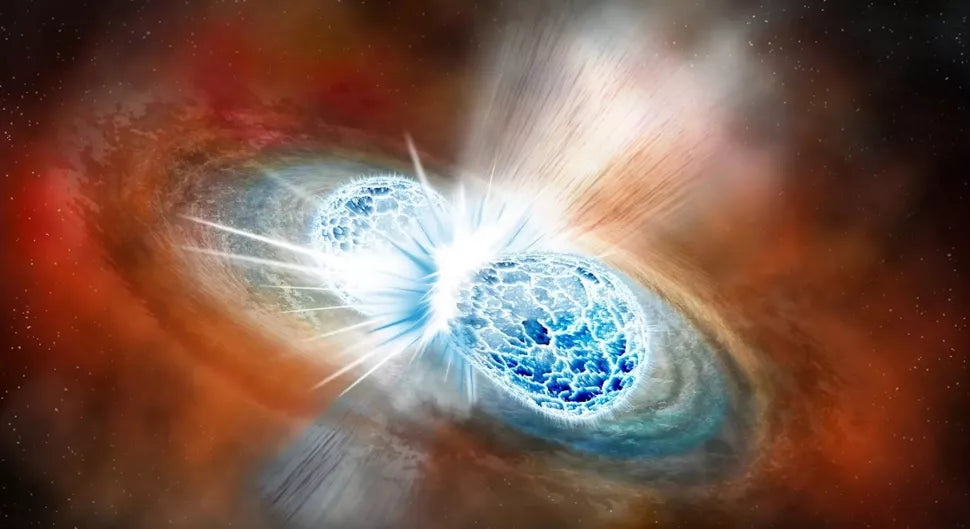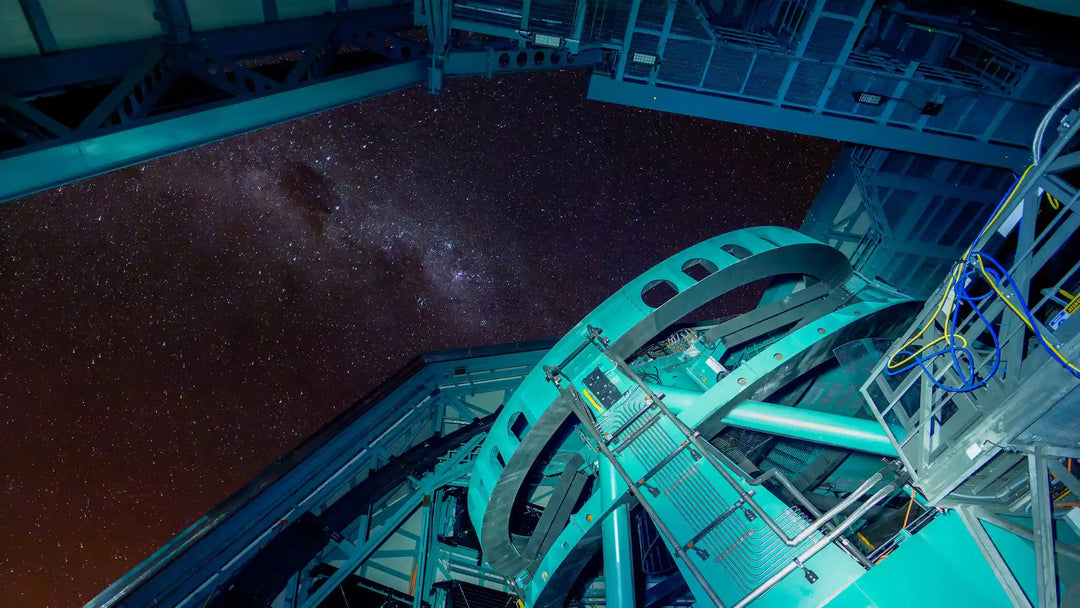Kilonova explosion and the cosmic evolution. What do we know?

A new study has revealed that kilonovas – massive cosmic explosions created when neutron stars collide – are spherical, not flattened discs as previously believed. Kilonovas are crucial in our understanding of cosmic evolution as they create heavy elements such as gold, platinum, and uranium. These explosions also create hypermassive merged neutron stars that rapidly collapse into a black hole. Despite this, many details about these events remain unknown.
What is kilonova? Shape of the kilonova explosion
When two stars orbit each other 100 times a second just before collapsing, it is expected – and demonstrated by all previous models – that the explosion cloud after the collision must be in the shape of a flattened, asymmetrical disc.
The first kilonova was detected in 2017. To the surprise of the researchers, recent studies of that event showed that kilonovas are spherical, contrary to the previous models' predictions and scientists’ expectations.
Astonished researchers are searching for explanations. They think the most likely option is that the amount of energy released when the hypermassive neutron stars merge is really huge. It smoothes out the shape of the explosion cloud and the released matter is distributed more spherically.
Read more:
- The Pale Blue Dot Photo: History, Significance, and Legacy
- Pale Blue Dot Image: What About Large Format Prints like Fine Art?
- The Earthrise Photo: A Journey Through Earth’s Iconic Space Portrait
James Webb Space Telescope uncovers young stars in NGC 346’s dusty ribbons
JADES-GS-z14-0: NASA's JWST Discovering the Most Distant Galaxy
Hubble Telescope Captures a Stellar Trio: The Dawn of a Sun-like Star
Enceladus holds potential for alien life with recent discovery of vital element
Anticipating the celestial show – Betelgeuse's potential supernova event
Supernova 2020eyj: First radio signal from the massive explosion of a dying white dwarf
Kilonovas' surprisingly even distribution of the elements
Earlier kilonova models showed that the elements created by the merge of the stars should be heavier than iron. According to the models, the most heavy elements like gold and uranium would arise in different places of the kilonova than the lighter ones, like strontium and krypton. And all the elements together were expected to be launched into space, in different directions and with random amounts.
However, the research team observed that only lighter elements, rather than heavier ones, were created in the 2017 kilonova. They were also distributed evenly throughout space, and not in different directions as previously believed.
The researchers think that neutrinos, fundamental particles that only weakly interact with matter, may be responsible for this unexpected observation.
More research of the kilonova events needs to be conducted to explain this phenomenon fully.
Kilonova explosion: new shade on the age of the universe
The discovery that kilonova explosions are spherical could have wider implications for astrophysics.
The shape of a kilonova could be crucial in turning these cosmic events into a measuring stick. A non-spherical object emits light at different orientations, whereas a spherical explosion gives a more uniform emission regardless of orientation.
This could result in much greater precision when measuring cosmic distances. It could also have a great impact on measuring the expansion speed of the universe and its rate of acceleration. This speed tells us how old the universe is.
Further research could help astrophysicists better understand dark energy, the mysterious force that accounts for around 70% of the cosmos' total energy-matter content and drives the accelerating expansion of the universe.
Check also:
Summary
In conclusion, the discovery that kilonovas are spherical, rather than flattened discs as previously believed, is an important step in our understanding of cosmic evolution. Researchers agree that further research must be conducted to determine how these events create heavy elements and how the neutrinos affect their distribution.
Knowing the shape of a kilonova could also help to measure cosmic distances more accurately, which could lead to a better understanding of dark energy and the rate of expansion of the universe. This new discovery shows that there is still much to learn about the universe and the events that shape it.
References
- Neutron star merger animation ending with kilonova explosion, https://esahubble.org/videos/heic1717b/ [18.04.2024]
- Lea R, What happens when neutron stars collide? Astronomers may finally know, https://www.space.com/astronomers-know-what-hapens-when-neutron-stars-collide, [18.04.2024]
- Lea R, A nearby kilonova explosion could threaten all life on Earth. But don't worry, scientists say, https://www.space.com/earth-kilonova-neutron-star-collision-threat-assessment, [18.04.2024]
- Yang, YH., Troja, E., O’Connor, B. et al., A lanthanide-rich kilonova in the aftermath of a long gamma-ray burst, Nature 626, 742–745 (2024). https://doi.org/10.1038/s41586-023-06979-5, [18.04.2024]


![Vera C. Rubin Observatory: Revolutionizing Astronomy Through the World's Most Advanced Telescope [All You Need To Know]](http://astrography.com/cdn/shop/articles/vera-c.-rubin-observatory_main.webp?v=1751627507&width=1080)

Leave a comment